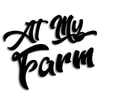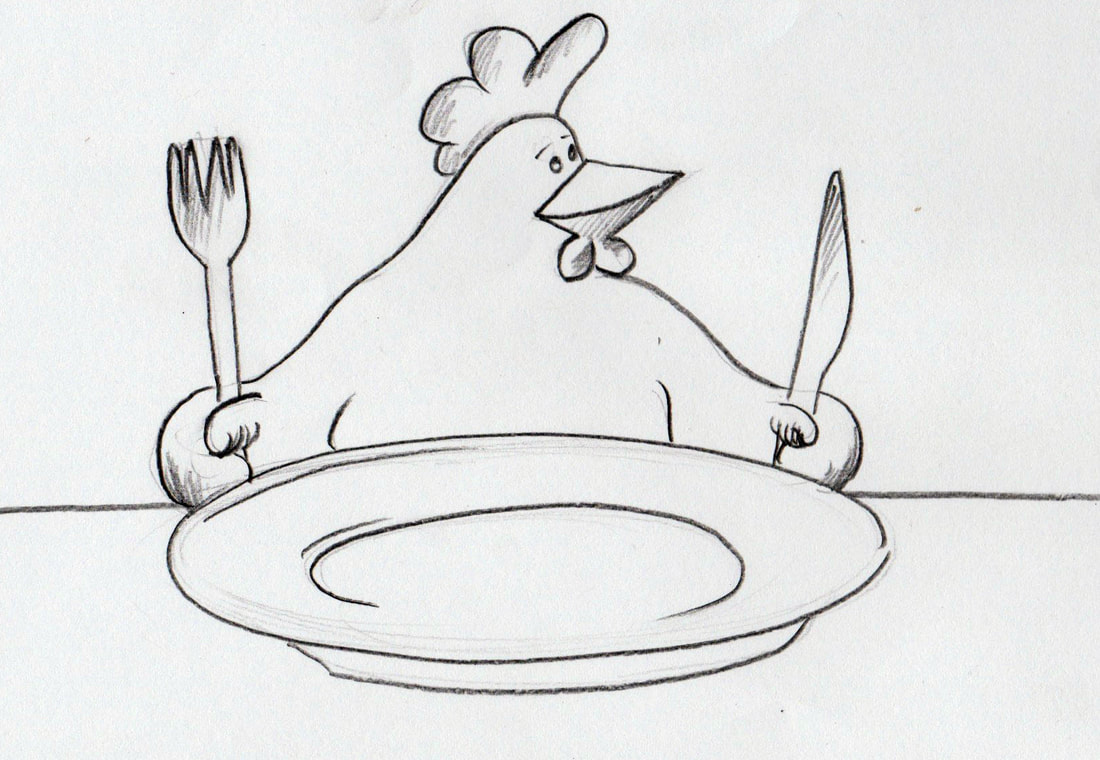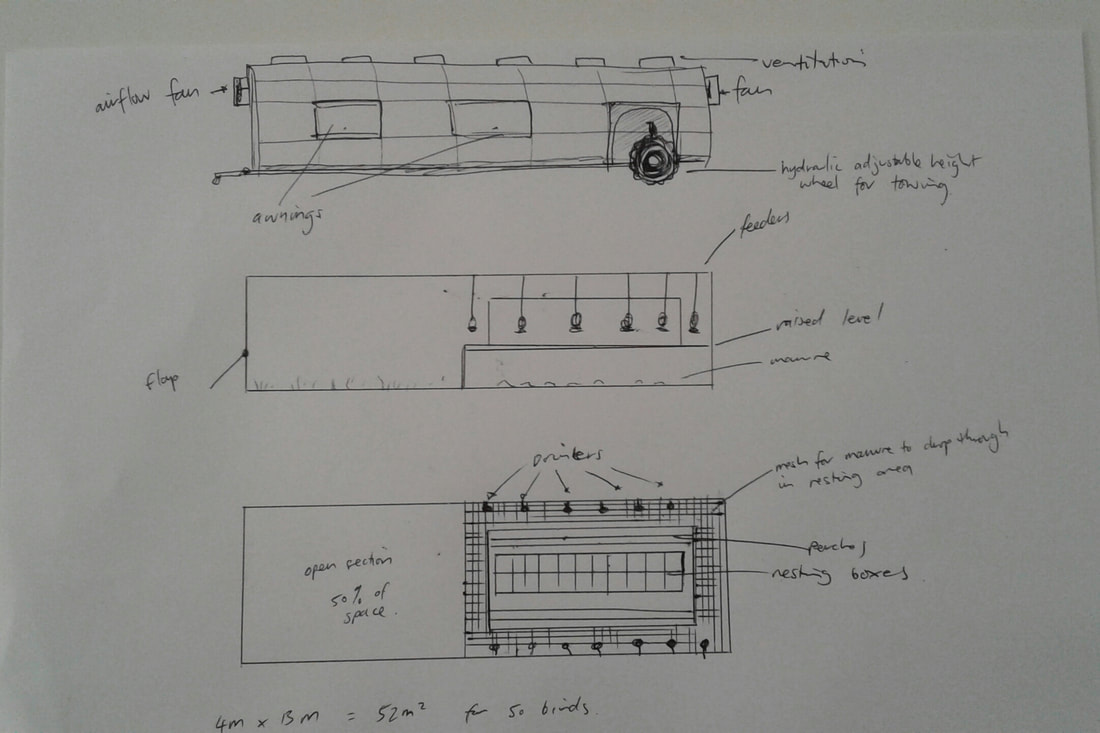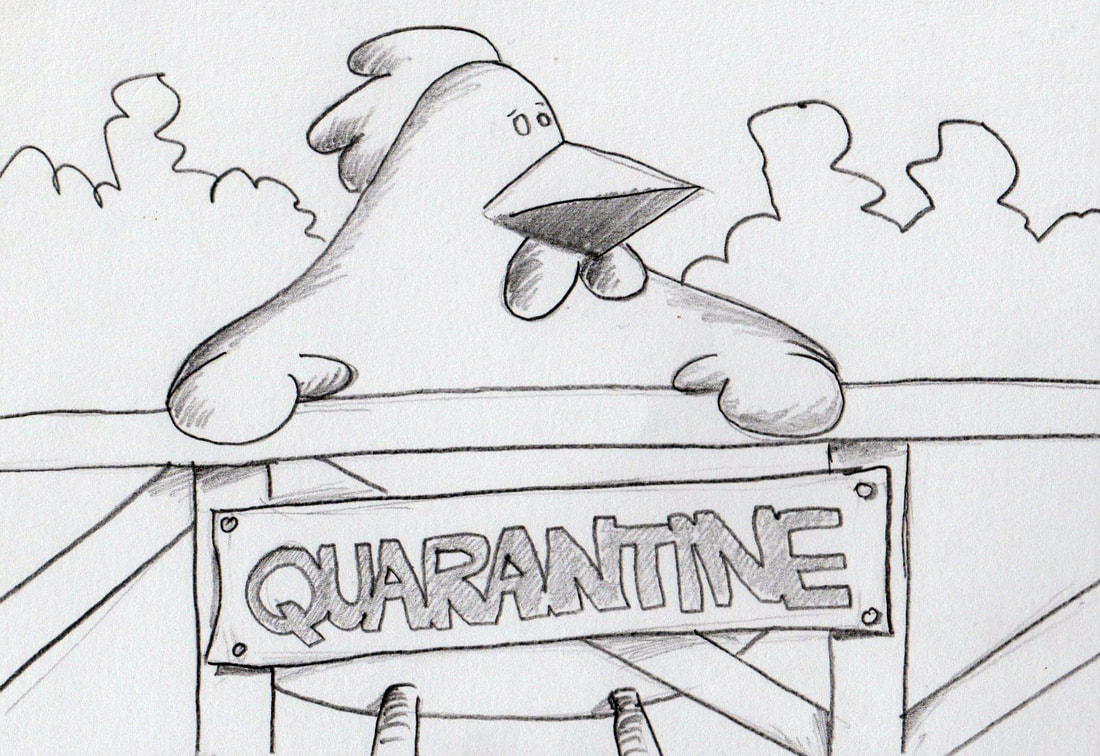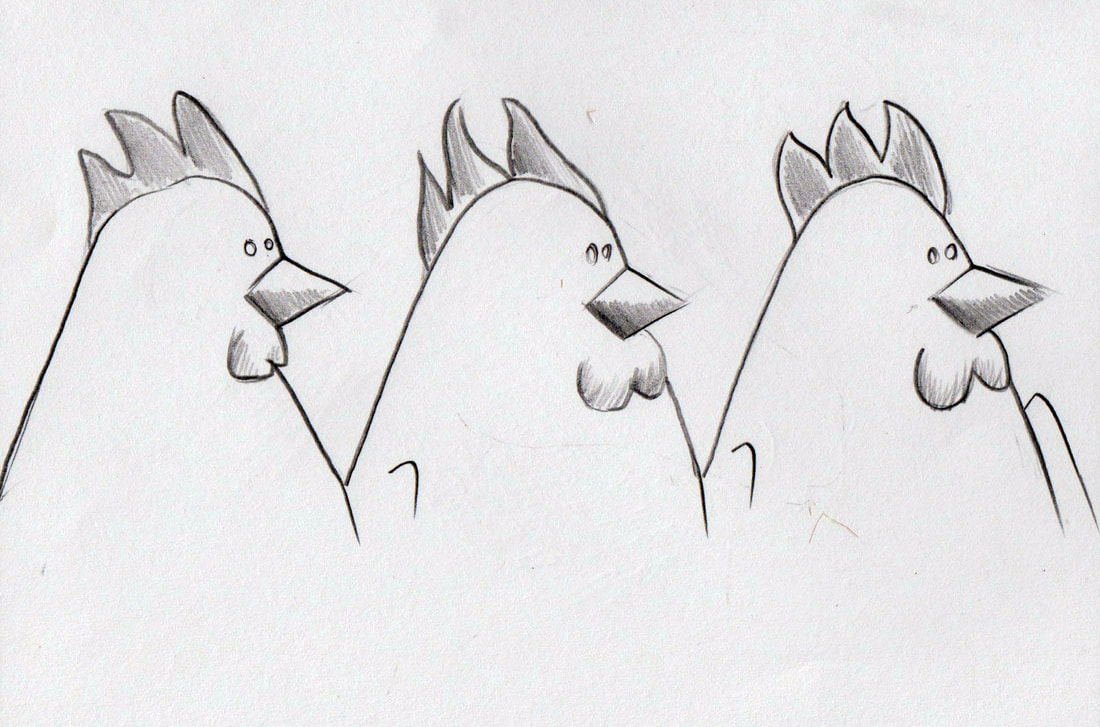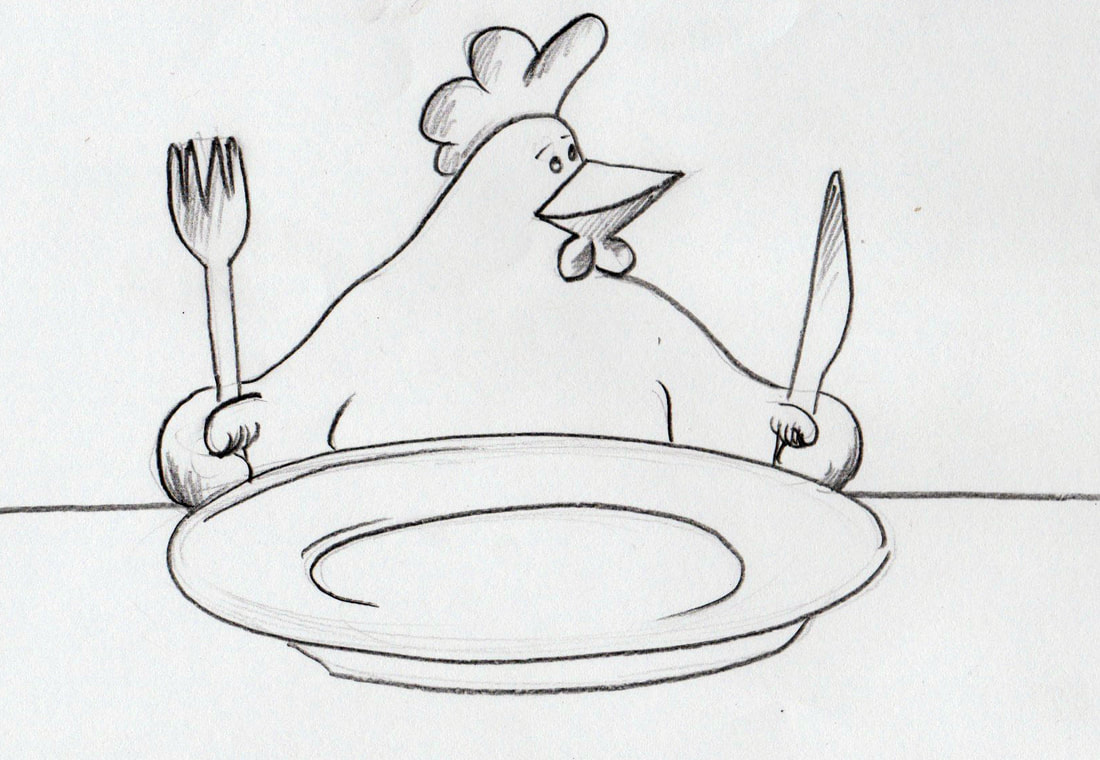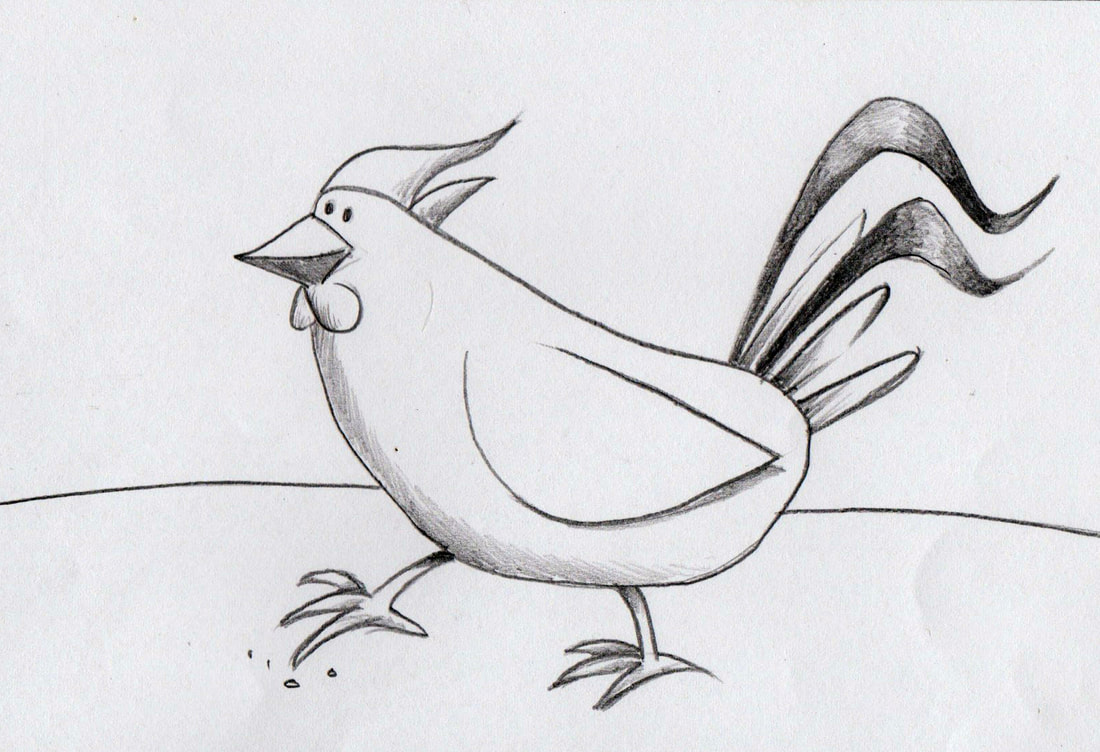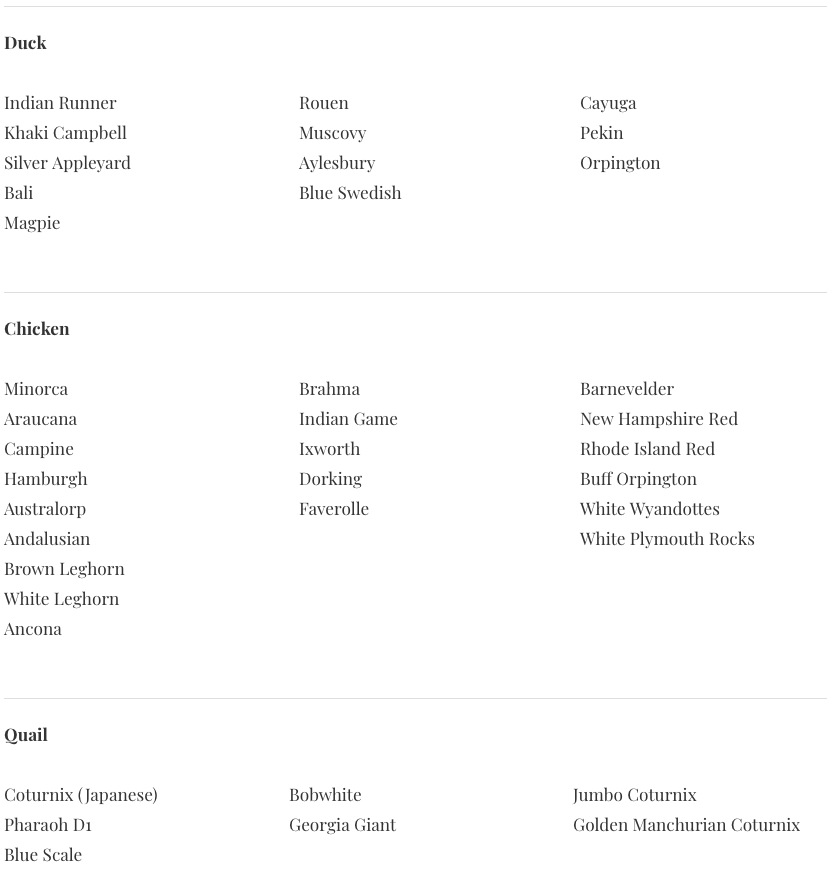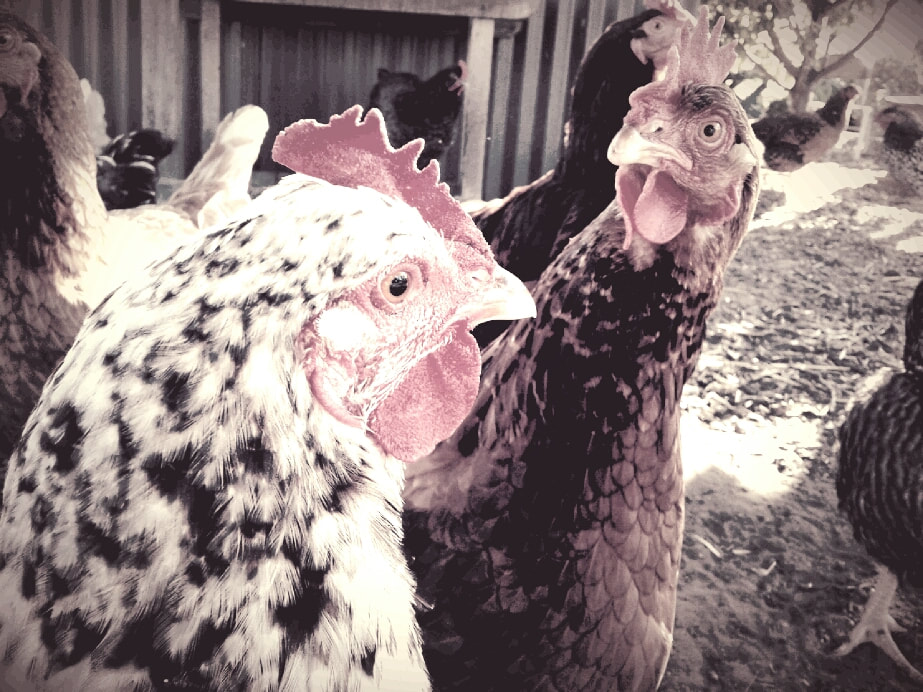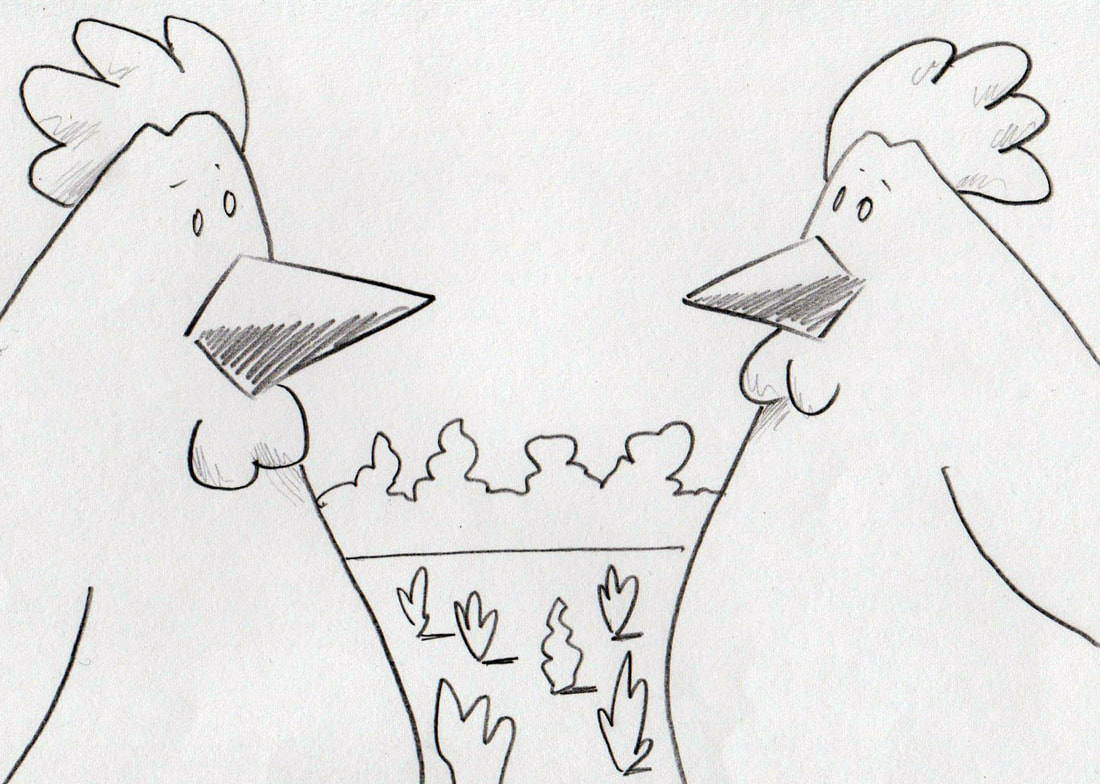|
In a chicken, striated muscle controls locomotion. These muscles are directed by the central nervous system to allow it to walk, jump, run and fly. This muscle is attached to parts of the skeleton by connective tissue. Smooth muscle, which is an involuntary muscle is used in places such as the esophagus and gizzard to first move food into the digestive system and then through contractions grinds the food allowing it to move into the intestine where again, smooth muscle is employed to push food through the system. Smooth muscle is also present in the chickens blood vessels which expand and contract to regulate blood pressure. Finally, cardiac muscle is found in the heart and contracts to force blood throughout the system.
0 Comments
Successful marketing of a poultry farm revolves around the customer's desire for a quality product but also an emotional reaction to the marketing of the product.
Ultimately no matter what the style of marketing, the product needs to be of a level of quality that customers expect. They also need to be made aware of the features and benefits of the product. What size is the egg? What health benefits area attached to the product? Is it fresh? Is it farmed sustainably, organically or the like? Many customers are extremely interested in the sustainable practices employed at the farm and the welfare of the animals involved. These aspects need to be promoted if they are in fact employed on the farm. The location of the farm can be a key feature in the promotion of the product. Is the farm located amongst a rich and healthy forest where the air isn't touched by pollution? Is it located at the base of an ancient, extinct volcano, where the earth is rich and the livestock are fed on maize grown in this soil? Do the birds drink from a local spring which is rich in mineral content, passed on to the consumer through the eggs? Local products are invariably more appealing to a consumer as they know it provides jobs to support the community and the product is more likely to be fresh. Often producers will attach their sstory to the marketing of the product. They may tell the story of the farm being passed from generation to generation or the ancestry of the genetic lineage of their birds. In the end the major aim of marketing is to tell the consumer what sets your product apart from all of the competitors At some point or another most agricultural enterprises need to perform a quarantine to halt pest or disease problems. It is one of the simplest and best forms of control. In the case of livestock parasites can quickly spread from one animal to the next both through physical contact or through digesting food infected via the faecal oral cycle. Diseases can be transmitted between animals and even from hen to egg as is the case for infectious synovitus.
Commonly, bringing new chickens into the flock has the high potential to spread disease and pests. This is why the quarantine of new animals is vital. Keeping new birds in a separate area for anywhere up to 2 months will allow you to observe the new animals for pests and diseases and allow you to treat them if possible. The quarantine area should be at least 10 metres away from the existing area and in a larger scale operation, it would be best if workers entering the quarantine area were then kept away from the main flock. Be aware also that any time an animal moves through new environments it can pick up pests and diseases. Transport or housing that isn't cleared in between transfers can retain pests and disease which can then be spread amongst any new birds they are exposed to. Any animals brought into a new environment should, as mentioned, be quarantined and observed for a period of time to halt any spread to the existing flock. Poultry can develop various dietary disorders. Stress, environment and temperature or bacterial/viral infections can influence what appears to be a well balanced diet and interfere with nutrient absorption The following is a brief list and description of some common disorders :
Fatty Liver : Toxins, nutritional imbalances or excessive calorie intake are said to be the possible causes of this disorder. The bird will develop an enlarged liver which will eventually haemorrhage leading to death. Gossypol Toxicity : Cottonseed meal, feed in incorrect quantities can cause toxicity via the gossypol compound found in the meal. Prolonged exposure causes cardiotoxicty leading to death in the animal Rickets : Calcium, phosphorous and Vitamin D3 deficiency can cause soft bones in poultry making it difficult for them to stand or walk. When rickets is suspected, examining the beak to see if it is soft and pliable is a good indicator of the deficiency. Vitamin A deficiency : Pale combs, wattles, beaks and shanks, discharge from nostrils and eyes, emaciation and weakness are signs of a vitamin A deficiency. Also a decrease in the production of eggs are noticeable signs Vitamin E Deficiency : In young birds a lack of coordination and in adults can affect eggs and testes in males Vitamin K deficiency : Easily bruised and bleeding B1 and B2 deficiency : poor growth, appetite loss, leg weakness Feed for chickens should contain somewhere between 60-70% carbohydrate and 30-40% protein. Carbohydrates in the form of maize, wheat, sorghum or millet for example provide the chicken with it's energy requirements. Protein supports the growth of the chicken and the production of eggs and body mass. Protein can come in the form of either plant or animal based sources, however as a comparison the crude protein value of soya beans is 30% while fish meal has a crude protein value of 60% and is high in amina acids such as lysine. Vegetable based sources of protein tend to have less amino acids. THe issue here however is that given in large amounts, fishmeal will impact the flavour of both the eggs and the meat, giving them a fishy flavour. As a result only a minimal amount of fishmeal should be given, 3-5%. Different components can greatly impact the egg quality, for example lucerne meal having 7% crude protein will give a rich yellow colour to the yolks. Vitamins and minerals are important components of feed and can also affect the egg. One egg farm states on their website that high amounts of B12 and riboflavin can turn egg whites to a shade of green! Phosphorous and calcium in particular are important for strong animal bones and strong shells. A small amount of salt and a vitamin supplement are generally necessary, however if the chickens free range they usually receive enough vitamins. Some other considerations are that chickens cannot digest fibre and thus make little use of it. As a result, fibre shouldn't make up any more than 5% of the ration. It is generally used to enhance the texture of the feed more than anything. Chickens have a keen eye, more so than their sense of smell and taste so shiney, brightly coloured foods are often more appealing. Clean water and shell grit are vital to the digestion of the chickens and be aware that chickens may reject dry dusty foods as they will clog their digestive system, hence such foods are often soaked which also stops the food swelling later once it actually reaches their digestive system. Freshly mixed this will be attractive to chickens, but left to become rancid they will turn away and the feed then becomes an attractant to rodents. Many backyard chickens receive kitchen scraps which are a valuable part of their diet, however many say this should be kept to a minimum as feed bought ready mixed provides everything in correct proportions. If kitchen scraps are plentiful and not too salty or fatty then feeding these alone with 125 grams of grain per hen may be suitable.
Here's a little table of a few different poultry breeds and what they are probably best suited to in respect to laying eggs and providing meat. Note that turkey is not listed as their conversion of feed to lay rate for eggs makes them an unviable egg producer, though their eggs are reputed to be quite alright!
Most commercial producers use cross bred stock. The reason this is the case is duet to an occurrence known as "heterosis" or hybrid vigour. As a result of cross breeding from two different purebreds such as a Rhode Island Red crossed with a White Leghorn, the offspring are often genetically superior and as a result of hybrid vigour a number of factors such as disease resistance, egg laying rate, behaviour, feed to meat conversion and general health can be seen to be markedly better. Most people tend to keep purebreds for ornamental purposes and as show birds rather than for their eggs and meat.
The other bonus for hybridising pure breds is that you can choose the positives of each breed that can then be passed to the offspring, which gives a farmer greater control in finding an appropriate breed for their circumstances, be it disease resistance, certain egg size, output or egg aesthetics.
Poultry is made up of a number of families of birds that include chickens, turkey, ducks, geese and quails. A pure bred bird arises from breeding two poultry of matching genetic type who are of pure bred origin, therefore giving birth to another pure bred bird of that type. Examples of pure bred varieties are from Australia are Australorp, Australian Game, Australian Langshan and Australian Pit Game.
Cross bred varieties arise from crossing two different breeds to create a hybrid bird. The Isa Brown chicken is a prime example. Others include Daisy Belle, Cream Legbar, Cornish Game Bird and Orpington. The breeds can also be broken into categories of "light", "dual purpose" or "table" birds. Some examples of chicken breeds that fall into these categories are : Light : Australorps (good egg producers) Dual Purpose : Rhode Island Red (good layer of large eggs, also good as parent stock for hybrids) Table Birds : Indian Game aka Cornish (slow growing, poor egg layer but extremely large chest and extensive flesh) |
